After reading the E2 visa overview and gaining a general idea of what an E2 visa application is, the next step is to learn about what business investors would need to provide as evidence to prove that they are qualified under an E2 visa.
The article below provides a brief overview of what the E2 visa requirements are looking for and what documents are usually submitted for each requirement.
- 1.
- a.
- b.
- c.
- d.
- e.
- f.
- 2.
- a.
- b.
Table of Contents
In an E2 visa petition for treaty investors, it must be shown that (1) the foreign investor has invested or is actively in the process of investing a substantial amount of capital in a U.S. business, (2) the foreign investor will only be in the United States to direct and develop the business, (3) the source of funds for the investment must be lawful and at-risk commercially, (4) the foreign investor owns 50% of the U.S. business or controls it by other means, (5) the U.S. business cannot be marginal (which means the U.S. business must earn more than the minimal living costs of the business investors and their family), and (6) the treaty investor has the nationality or citizenship from a qualified treaty country.
The following sections consist of a brief summary on each requirement and the documents that are generally used as evidence to satisfy that requirement.
eng-1024x427.jpg)
The person is a citizen or National of a country that has a qualified treaty with the United States (or the country is approved under U.S. legislation)
The E2 visa petition requires the business investor (or the U.S. business) to have the nationality or citizenship of a foreign country that has a qualified treaty with the United States (or the country is approved under U.S. legislation).
E2 Visa Business Investor With Dual Citizenship
Business investors who have dual citizenship (not including U.S. citizenship) can choose one of the countries (if it is a qualified treaty country) to use for the E2 visa. If the business investor with dual citizenship has already entered the United States, then the country of the passport they used to enter would be the country used under the E2 visa.
E2 Visa Business Investor Cannot be U.S. Citizen or U.S. Green Card Holder
Business investors who have a green card or have a U.S. citizenship (dual citizenship) will not be treated as a foreign treaty investor for the treaty country ownership qualifications under the E2 visa because they cannot actually hold an E2 visa status.
E2 Visa Business Investor is a Legal Entity
When the business investor under the E2 visa is an organization or enterprise (business entity), the nationality of the organization or enterprise is traced back to the nationality of its individual owners (persons). The organization or enterprise that is acting as a business investor must be at least 50% owned by persons who have a valid E2 visa status (or who are qualifiable for an E2 visa status if they are outside the United States) and the organization or enterprise will be given the nationality of the business owner’s treaty country.
In scenarios where two owners from different treaty countries have equal shares in a partnership or a 50/50 joint venture, the nationality of the organization or enterprise can be either owner’s treaty country. The nationality of publicly traded companies is usually presumed to be of the country where the stock is physically listed and the stock exchange that it is exclusively sold and traded on.
Documents to Prepare (Nationality or Citizenship of Treaty Country)
Evidence that shows the business investor has a nationality or citizenship of a qualified treaty country under an E2 visa can include but are not limited to:
- Passport is issued by a qualified treaty country (it should include biographical pages, related visa pages and stamps that show U.S. admission)
- Arrival-Departure Record (Form I-94)
Evidence that shows the E2 visa enterprise or organization has a nationality of a qualified treaty country under an E2 visa can include but are not limited to:
- Capitalization table of the treaty enterprise, or detailed list of the owners (it should include their citizenship or nationality, type of ownership, ownership percentages)
- Most recent annual report (it should include all subsidiaries, affiliates, branch office, ownership percentage based on owner’s nationality or citizenship)
- Most recent Securities and Exchange Commission Form 10-k (it should show the subsidiaries and ownership percentage of the treaty enterprise)
- Most recent meeting minutes of the treaty enterprise (it should list the equity holders, and the type, amount, and percentage they own)
- Equity certificates of the treaty enterprise (it should show the name of each equity holder and the type owned)
- Equity ledger of treaty enterprise (it should show all certificated and uncertificated equity issued, total amount, type of equity, all equity holder names)
- [Corporations] Bylaws, articles of incorporation, certificates of designation of the treaty enterprise, and all amendments of treaty enterprise (it should include type and amount of stock authorized to be issued, receipt date stamped by state official)
- [LLC] Operating agreement, articles of organization, and all amendments, attachments, addendums, additional statements, exhibits of treaty enterprise (it should include member names, type and percentage of membership interests, receipt date stamped by state official)
- [Partnerships] Partnership agreement, registration documents, and all amendments, attachments, additional statements, exhibits of treaty enterprise (it should include partner names, type and percentage of partnership interests, extent of partner’s liabilities, receipt date stamped by state official)
- [Sole Proprietorships] Sole proprietorship registration documents of treaty enterprise (it should identify the person operating the sole proprietorship, the person’s nationality or citizenship, receipt date stamped by state official)
- [Franchise] Franchise agreement of treaty enterprise, and all amendments, attachments, additional statements, exhibits (it should show the nationality or citizenship of treaty investor)
- Documents that show the treaty enterprise has been authorized to operate as a branch office in the state
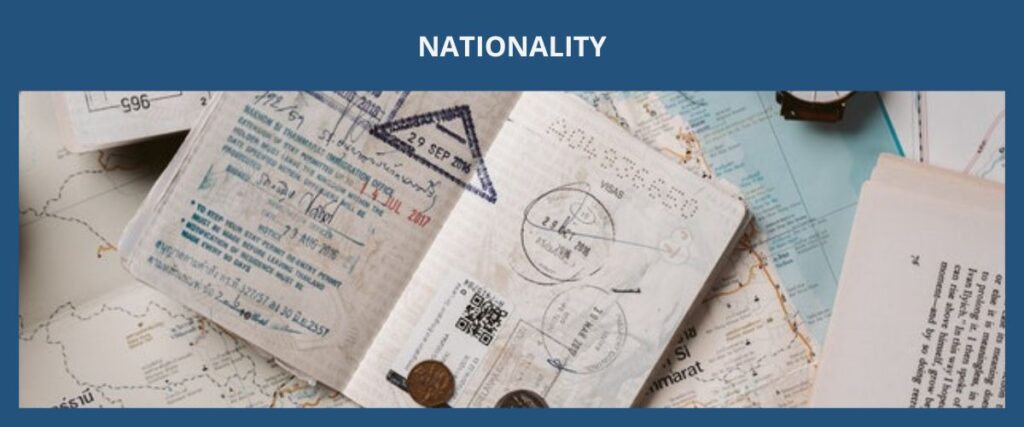
The source of funds of the investment must be lawful
The E2 visa petition requires that the source of funds or other assets used to invest in the U.S. business must be lawful which means that it cannot be obtained directly or indirectly through criminal activity. A statement alone is not enough to prove that the source of funds of the investment is lawful. The E2 visa treaty investor should be able to show where the money invested into the U.S. business came from and how the money was used to invest into the U.S. business.
Typically, the original source of funds for the investment are from sales of properties or businesses, inheritance, earnings, or loans which would usually be moved to a U.S. bank account (however funds already in the United States can be used as well) to pay for the U.S. business’s expenses such as rent, equipment, goods, etc. For example, a business investor showing only wire transfers to a U.S. bank account will most likely not be enough under the E2 visa. The business owner should also provide additional documents that can also show them already signing contracts, leasing office spaces, and making actual purchases (e.g., equipment or goods) for the U.S. business under the E2 visa.
Documents to Prepare (Lawful Funds)
Evidence that shows the original source of capital is lawful can include but are not limited to:
- A detailed explanation of the origin of the investment funds and they were used towards the E2 treaty investment enterprise
- Documents that show the origin and lawful path of all funds used for the investment (it should include original wire transfers from overseas, cancelled checks, certified bank statements)
- Foreign business registration records and licenses
- Foreign tax returns (it should include income, real property, personal property, intangible property, franchise or any other tax returns)
- Domestic and foreign bank records (it should include bank statements, proof of transfer of funds, letters of credit, proof of domestic or foreign assets and accumulated income that are the sources of income used for the investment)
- Personnel records, pay records, retirements records that show the sources of income for the investment
- Property records that show ownership and income from that property that show the source of income for the investment
- Loan or mortgage agreements, promissory notes, security agreements, other documents that show borrowing that is unsecured personal business capital or capital that is secured by own assets other than those of the investment enterprise that the applicant is primarily and personally liable
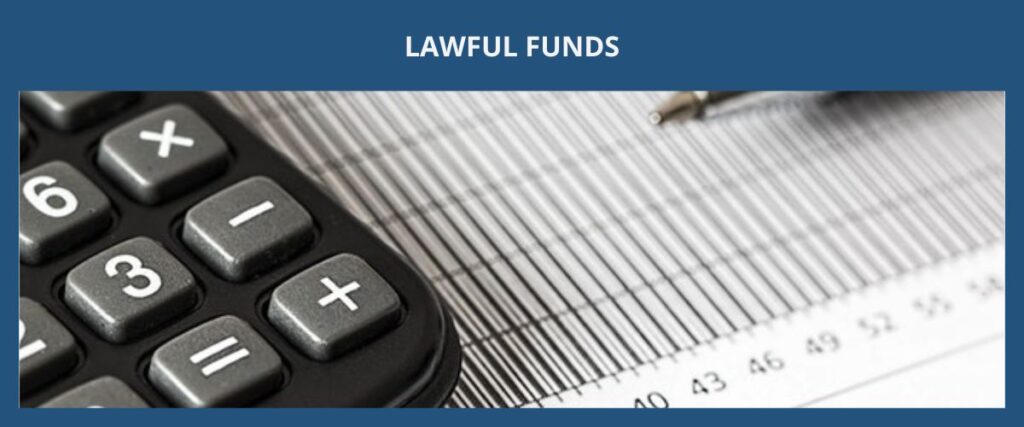
The capital (funds or other assets) invested or being invested must be at risk in the commercial sense with the goal of generating a profit
The E2 visa petition requires the capital used must be in the person’s possession and be subject to the risk of partial or total loss if the business fails. In addition, the capital used must be the person’s unsecured personal business capital or capital secured by the person’s personal assets. Capital that has been invested or is in the process of being invested in the enterprise must be irrevocable (cannot be returned).
The amount of capital invested must also be substantial compared to the total cost of either purchasing an established enterprise or creating a new enterprise and to support the likelihood that the person will successfully direct and develop the treaty enterprise. In general, if the cost of the enterprise is lower, the capital invested would need to be higher in proportion to be considered as substantial. The purpose of these requirements is to make sure that the person is truly financially committed to operating the treaty enterprise to become successful.
Documents to Prepare (Funds are At-Risk)
For new business investments, the evidence that show the capital used is at-risk can include but are not limited to:
- When the capital is already invested into the treaty enterprise, all cancelled (cleared):
- Money orders
- Personal, business, or cashier’s checks
- Other bank certified financial documents that show funds already invested into the treaty enterprise
- When the capital is in the process of being invested into the treaty enterprise, all cancelled (cleared):
- Money orders
- Personal, business, or cashier’s checks
- Other financial and relevant documents that show funds in the process of being irrevocably invested into the treaty enterprise
- Detailed and itemized list of materials and goods purchased to start up the treaty enterprise, and the form of payment for those purchases (it should include bank certified money orders, or personal, business, or cashier’s checks)
- Financial accounting of the treaty enterprise’s purchase transactions that shows a detailed description of each individual transaction, the at-risk funds used, the form of payment for those purchases (it should include bank certified money orders, or personal, business, or cashier’s checks)
- Corporate documents that show the purchase of the treaty enterprise:
- Equity purchase agreement for the treaty enterprise (or other similar agreement of sale and purchase of equity between the enterprise and the person)
- Meeting minutes or written consent that authorize or show the sale and purchase of equity
- Ledger that shows the sale and purchase of equity
- Equity certificates that are related to the sale and purchase of equity
- Forms of payment for those equity (it should include bank certified money orders, or personal, business, or cashier’s checks)
- Documents that show the funds are committed to the investment irrevocably and are placed at risk after the purchase of the equity
- Lease of the treaty enterprise must be signed and dated, and include:
- Monthly rental fee
- Total square footage of premises (it should include all office, manufacturing, production, warehouse spaces)
- Form of payments for the rent (it should include bank certified money orders, or personal, business, or cashier’s checks)
For purchases of pre-existing businesses, the evidence that shows the capital used is at-risk can include but are not limited to:
- Executed agreement that includes:
- Detailed purchases of the enterprise (equity purchase agreement, asset purchase agreement, merger agreement)
- Amount and documents of the payment
- All attachments, addendums, additional statements, exhibits
- Documents of valuation (appraisal or valuation analysis of business assets) that show the details of the value of the purchased assets
- Financial and business records of the treaty enterprise:
- Most recent financial statements of the treaty enterprise (it should include the balance sheet, statement of income and expenses)
- Most recent federal income tax return (it should include all relevant schedules)
- State Quarterly Wage Report (it should include all the name, salary, and number of weeks worked of all employees)
- Business licenses (it should include city, county, state, federal)
- Lease of the treaty enterprise must be signed and dated, and include:
- Monthly rental fee
- Total square footage of premises (it should include all office, manufacturing, production, warehouse spaces)
- Corporate documents that show the purchase of the treaty enterprise:
- Meeting minutes or written consent that authorize or show the purchase of the treaty enterprise
- Ledger that is related to the purchase of the treaty enterprise
- Equity certificates that are related to the purchase of the treaty enterprise
- Forms of payment for those equity (it should include bank certified money orders, or personal, business, or cashier’s checks)
- Bill of sale for the treaty enterprise (it should include bank certified money orders, or personal, business, or cashier’s checks)
- Final escrow documents related to the purchase of the treaty enterprise (it should include bank certified money orders, or personal, business, or cashier’s checks)
- Bank statement of escrow company or agent that show funds were deposited
- When borrowed funds were used for purchasing the treaty enterprise:
- Mortgage or loan agreements
- Promissory notes
- Security agreements
- Other documents that show the borrowed funds were secured by the applicant’s own assets (other than those of the treaty enterprise) and the applicant is primarily and personally liable
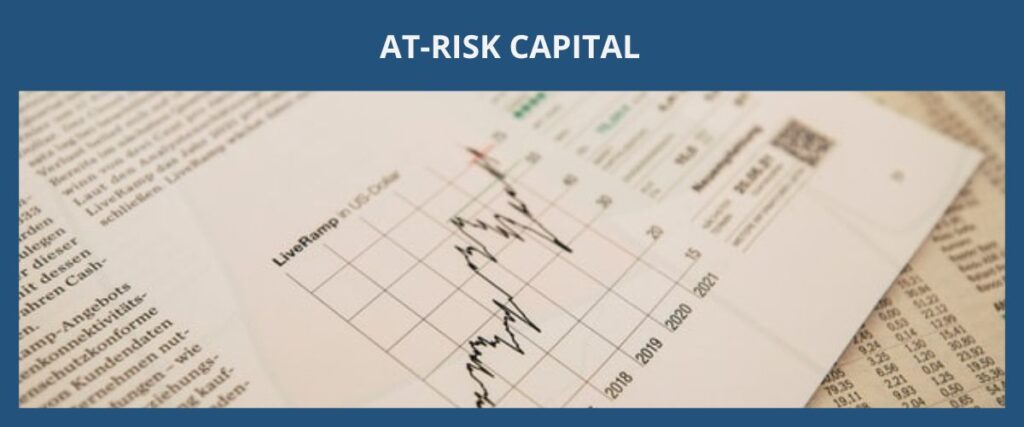
The person must be able to or will be able to direct and develop the treaty enterprise based on control over it
The E2 visa petition requires the business investor to have appropriate job duties and sufficient control over the U.S. business to direct and develop its operations.
Control Over Business
Under the E2 visa petition, the business investor’s control can be shown by having at least 50% ownership of the treaty enterprise, or by having operational control in a managerial position or by other corporate devices.
A business investor under the E2 visa can usually show their control over the U.S. business in forms such as ownership of the U.S. business, control of stock by proxy, being in a management position and having the authority as a manager, etc. When there are 2 people with equal shares in a partnership or a 50/50 joint venture under the E2 visa, a controlling interest can still be shown if each partner or joint venturer retains full management responsibility and rights of the U.S. business investment due to negative control (i.e., neither person can make a decision without the other person’s consent). However, this type of equal partnership cannot work if there are more than 2 owners due to the control being divided up too much.
Job Duties of Investor
The business investor under the E2 visa should be in an executive or supervisory position that allows them to have ultimate control and responsibility in running the operation of the U.S. business. A person in an executive position under the E2 visa should have the authority to make senior-level decisions on the policies and directions of the U.S. business. A person in a supervisory position under the E2 visa should be responsible for a significant proportion of the operations of the U.S. business and supervising professional and supervisory staff (which means they should not be directly supervising lower-level employees). The business investor who is either in an executive or supervisory position under the E2 visa cannot be doing skilled or unskilled labor unless the hands-on duties are only incidental to the duties of developing and directing the operations of the treaty enterprise.
Control Under Franchise
If the U.S. business is part of a franchise, the business investor under the E2 visa can still show their control over the U.S. business by their authority to hire and fire employees, control profit margins, set retail prices, setting the hours of their business, deciding the pay scales of employees, select advertising done for the business, or purchasing goods and materials used on the open market even when there are certain restrictions placed on those activities in the franchise agreement.
Documents to Prepare (Control Over Business to Direct and Develop)
Evidence that shows the business investor has control over the business to direct and develop its operations can include but are not limited to:
- Detailed description of the person’s job duties
- Organizational chart or diagram (it should include the entity’s structure, staffing levels), OR business plan if no employees have been hired (it should include hiring timelines and duties of employee)
- State Quarterly Wage Report (it should include all the name, salary, and number of weeks worked of all employees)
- Documents that show payment to hired workers:
- Payroll summary
- Wage and tax statement (Form W-2)
- Transmittal of wage and tax statements (Form W-3)
- Miscellaneous income statement (Form. 1099-MISC)
- Employment agreements
- Current capitalization table or detailed owner list (it should include the owners’ names, their ownership type and percentage)
- If the person’s ownership is lower than 50%, then signed contracts between the person and all other parties agreeing that the person controls the treaty enterprise by having operational control in a managerial position or through other corporate devices (or other means) must be provided
- List of individuals elected by the treaty enterprise’s equity holders to oversee the management
- Most recent Securities and Exchange Commission Form 10-k (it should show the subsidiaries and ownership percentage of the treaty enterprise)
- Most recent meeting minutes of the treaty enterprise (it should list the equity holders, and the type, amount, and percentage they own)
- Equity certificates of the treaty enterprise (it should show the name of each equity holder and the type owned)
- Equity ledger of treaty enterprise (it should show all certificated and uncertificated equity issued, total amount, type of equity, all equity holder names)
- Subscription or equity purchase agreements made between the treaty enterprise and its equity holders
- [Corporations] Bylaws, articles of incorporation, certificates of designation of the treaty enterprise, and all amendments of treaty enterprise (it should include type and amount of stock authorized to be issued, receipt date stamped by state official)
- [LLC] Operating agreement, articles of organization, and all amendments, attachments, addendums, additional statements, exhibits of treaty enterprise (it should include member names, type and percentage of membership interests, receipt date stamped by state official)
- [Partnerships] Partnership agreement, registration documents, and all amendments, attachments, additional statements, exhibits of treaty enterprise (it should include partner names, type and percentage of partnership interests, extent of partner’s liabilities, receipt date stamped by state official)
- [Sole Proprietorships] Sole proprietorship registration documents of treaty enterprise (it should identify the person operating the sole proprietorship, the person’s nationality or citizenship, receipt date stamped by state official)
- [Franchise] Franchise purchase agreement, and all amendments, attachments, additional statements, exhibits (it should show who controls the treaty enterprise)
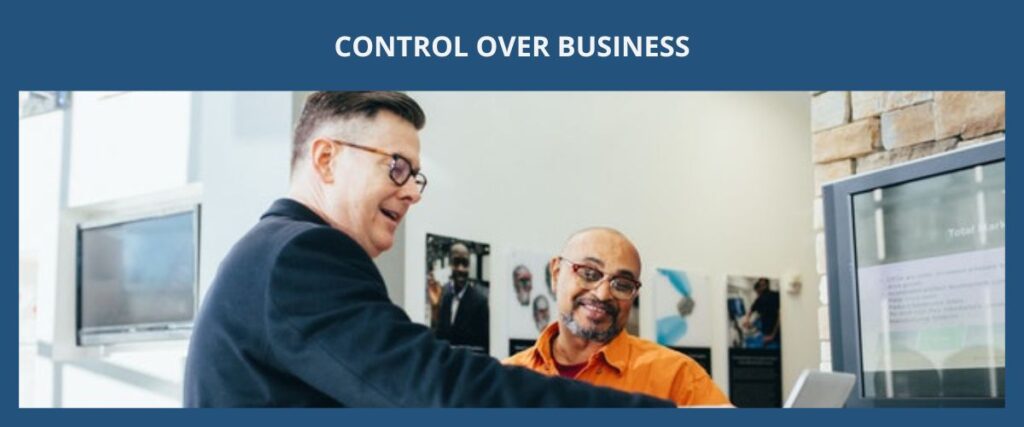
The treaty enterprise must be a bona fide (real, active, and operating) business that produces goods or services for profits
The E2 visa requires the U.S. business to be a real business that meets the legal requirements to do business in the United States and it must also be actively operating to provide goods or services for a profit. This means that the U.S. business under the E2 visa cannot be a shell company or an idle speculative investment (or passive investments) that is held for potential appreciations in value such as a U.S. business holding stocks or undeveloped land that is not intended to be actively developed commercially by the business investor. The U.S. business also cannot be a non-profit organization under the E2 visa due to the for-profit requirement.
Under the E2 visa, passive investments such as investments in single-family residential properties (different from commercial residential property) that are rented out to tenants do not qualify unless the portfolio is so large that an active property management business is needed to maintain the investment. For example, 5 houses being rented out under the U.S. business will most likely not qualify under the E2 visa whereas a U.S. business that manages 40 rental houses may qualify as an active property management business.
E2 Visa New Company (Start-Ups)
Start-ups are allowed under the E2 visa petitions (treaty investor). In comparison, treaty traders under E1 visas are required to show that they already have an established business involved in international trade for a period of time before their E1 treaty trader visa petition.
Documents to Prepare (Real Active Operating U.S. Business)
Evidence that shows there is a bona fide U.S. business can include but are not limited to:
- Detailed description of the treaty enterprise’s activities
- Internal Revenue Service (IRS) notice that shows the Employer Identification Number (EIN)
- Federal income tax returns of the treaty enterprise
- Audited financial statements (it should include balance sheets, statements of income and expenses)
- State Quarterly Wage Report (it should include all the name, salary, and number of weeks worked of all employees)
- Documents that show payment to employees:
- Payroll summary
- Wage and tax statement (Form W-2)
- Transmittal of wage and tax statements (Form W-3)
- Business licenses (it should include city, county, state, federal) OR proof that it is not required
- Organizational chart or diagram (it should include the entity’s structure, all hierarchy and staffing levels, list of all proposed positions, summary of proposed duties, expected educational level, names of the employees filling the positions)
- Business bank statements of the treaty enterprise
- Client and vendor agreements for purchasing marketing services or materials for the enterprise’s services or goods
- Documents that show the treaty enterprise has interest in real property at a physical location (it should include purchase agreements, lease agreements)
- Final escrow documents related to the purchase of the treaty enterprise (it should include bank certified money orders, or personal, business, or cashier’s checks)
- Lease of the treaty enterprise must be signed and dated, and include:
- Monthly rental fee
- Total square footage of premises (it should include all office, manufacturing, production, warehouse spaces)
- Letter from owner or property management company confirming the property owner granted permission the sublease of the treaty enterprise and the treaty enterprise is actually occupying the premises and maintaining the sub-lease agreement
- Utility bills
- Telephone directory listing of the treaty enterprise
- Newspaper, trade publications, magazines that show advertisements or articles of the treaty enterprise and its services or products (it should include the publication name, date, circulation)
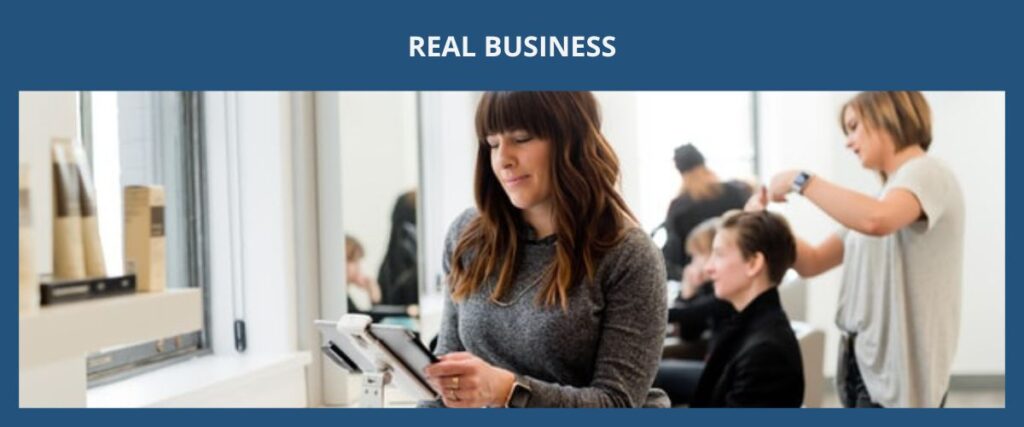
The treaty enterprise cannot be a marginal enterprise
The E2 visa application requires that the U.S. business not be a marginal enterprise. A marginal enterprise is a business that generates income that is just enough to pay the minimal living cost of the treaty investor (and their family). In other words, the treaty enterprise under the E2 visa must currently (or in the future is able to) generate an income that provides an amount of money that can cover more than the minimal living costs of the treaty investor (and their family), OR it must be shown that the U.S. business can make a significant economic contribution in the future.
For a treaty enterprise to make a significant economic contribution in the future under the E2 visa, the projected income generation should usually be realizable within 5 years from the date the person starts the normal business activities of the treaty enterprise in the United States.
Substantial Investment
There is no set dollar amount on how much capital needs to be invested for an E2 visa. Instead, an inverted proportionality test of the amount of capital actually invested and the cost of the U.S. business is used to determine what is a substantial investment for the E2 visa. The cost of an existing U.S. business is its fair market value (which is usually its purchase price). The cost of a start-up business is the actual cost that is needed to establish the business to the point that it can operate.
Under the E2 visa applications, an investment made that equals or is more than the value of the business would be enough to qualify as a substantial investment. However, most cases do not involve investments that are as high as the cost of the business itself under the E2 visa applications which results in the usage of the proportionality rule instead. In most E2 visa application cases, the investment amount should be proportionately higher when the cost of the U.S. business is lower. For example, a U.S. business that is a car manufacturing plant may cost $10M dollars to purchase but a consulting firm may cost $100k instead. The business investor would likely be able to qualify for an E2 visa with an investment amount that is considered on a lower proportion (such as 30% which is $3M) for the car manufacturing business but would need to invest in an amount that is considered a higher proportion (such as 95% which is $95k) for the consulting business.
Small Family-Owned Business
For smaller family-owned businesses with lower levels of investments, statistics from trade associations or letters from chambers of commerce may be used to help determine what a reasonable amount of investment can be qualified as a substantial investment under the E2 visa.
New Companies (Start-Ups)
For start-up companies or companies that do not currently earn enough income under the E2 visa petition, a projected future income can be used alternatively to show that the U.S. business can make a significant economic contribution to the United States. This usually involves the U.S. business showing that it currently employs U.S. workers or will soon employ U.S. workers, or that it will indirectly increase local job opportunities or otherwise make a significant economic positive impact on the local economy such as regularly hiring subcontractors creating indirect local employment. Job creation for U.S. workers as full-time employees is usually more favorable than for employees in part-time or seasonal positions.
The projected future income and significant economic contribution to the United States should typically be attainable within 5 years of the date that the U.S. business under the E2 visa starts its normal business activities. If the U.S. business is already generating income, then it should show business growth. A detailed business plan generally would be needed to satisfy this requirement under the E2 visa.
Documents to Prepare (Substantial Investment & Not Marginal Business)
Evidence that shows the treaty enterprise is not a marginal business can include but is not limited to:
- Detailed business plan or executive summary that shows the treaty enterprise will generate income to provide more than a minimal living for applicant (and family) OR will make a significant economic contribution, it should include any supporting documents and the 1 year, 3 year, and 5 year projections of:
- Business expenses
- Sales
- Gross income and profits or losses
- U.S. individual income tax return of person (complete and signed)
- Wage and tax statement (Form W-2)
- Transmittal of wage and tax statements (Form W-3)
- Mortgage or rent payments of the person’s residence
- Utility bill payments of the person’s residence
- Monthly revolving debt statements (it should show the amount due and paid)
- Documents that show the person and their family’s payment of daily expenses (it should include expenses for food, health care, child care, clothing)
- Car titles, car insurance, other documents that show the cost and payment of transportation for the person and their family
- Most recent financial statements of the treaty enterprise (it should include the balance sheet, statement of income and expenses)
- Tax documents that show the treaty enterprise’s revenue growth
- Contracts and receipts for materials and services of capital improvements of assets owned by the treaty enterprise
- Payroll records that show employees other than the person and their family (it should include records that show an increase of employees if applicable)
- Contracts, receipts, invoices for the treaty enterprise’s goods or services
- Bank statements or other documents that show the treaty enterprise being paid for its goods or services
- Bank statements, wire transfer, property records that show investment in other business ventures (does not have to be in the United States) OR that the person has other income sources other than the treaty enterprise (it should include an explanation on whether any additional sources of income will be used for developing the treaty enterprise)
- Contracts with other businesses that show future orders for the treaty enterprise’s services or goods
- Patent or copyright applications or approvals owned by the treaty enterprise
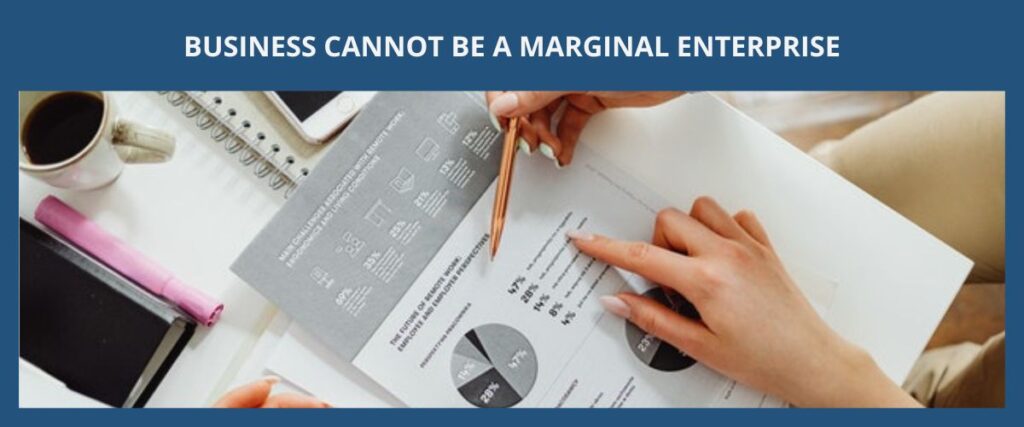
The overall emphasis on the documents and requirements/criteria of an E2 visa application is that the investments are lawful and at-risk (i.e., not just pretending to be financially committed) and the U.S. business that the business investor will be managing is real (i.e., not passive investment or just set up for immigration purposes). The business investor under the E2 visa application would need to show that they have already invested or are actively in the process of investing a substantial amount of money into a U.S. business and the reason that they are coming to the United States is to manage that business investment.
The requirements for an E2 visa application are extensive and while ticking the boxes of requirements sounds simple enough, figuring out what items should be included and strategizing how the application is presented is not. It is common practice and strongly encouraged to obtain an attorney for employment-based nonimmigrant visa applications.

The closest alternatives to filing the E2 visa treaty investor application as a business owner would be filing for an E1 visa application for treaty investors who has an existing business that does mostly international trades between the United States and the treaty country that they are from, or an L1A visa or an L1B visa petition which is for employees who are either a manager or executive, or a person who has specialized knowledge of a multinational company to transfer from an overseas office to work in a United States office. Like the E2 visa, the L1A visa, and L1B visa also allow a foreign person to come to the United States to set up and manage start-up companies or newly established companies.
Another possible alternative to filing an E2 visa application would be to file for a green card application which is a permanent immigrant visa and not a temporary visa like the E2 visa. Typically, a person who is qualifiable as a business owner (treaty investor) for an E2 visa would choose to file for an EB5 green card (investor green card) due to certain similarities of the standards and requirements between the two visas. For more on green cards gained through work, please read the overview for employment-based green cards.
If you have an E2 work visa (Treaty Investor) immigration question, please fill out our contact us form or send us an email with some basic information about your background and your immigration needs. We will do our best to respond within 48 hours.
How we can help?
Kylie Huang Law’s immigration attorney will help identify whether the E2 visa is the appropriate nonimmigrant visa category for the client’s professional background and if there are other visa options for the client. We will work closely with our client to prepare a convincing case for their E2 visa application and we will also strategize on how the E2 visa application should be presented to achieve the best chances of approval. It is strongly advised and common practice to retain an immigration attorney for an E2 business visa application due to the complexities in the immigration process and visa requirements.
What does the typical process look like to retain (hire) us?
- Step 1:
- Step 2:
- Step 3:
- Step 4:
- Step 5:
- a.
- b.
- c.
- Step 6:
- Step 7:
- Step 8:
- Fill out the form (with some basic information on what your immigration needs are)
- Sign up and log into the client portal to schedule an appointment online
- Attend scheduled appointment (typically a phone call or zoom meeting)
- Retainment (signing a contract to hire us)
- Start processing case
- Gathering required documents
- Preparing paperwork
- Confirming contents of documents that will be submitted
- Filing the case
- Following up on the status of the case
- Close the case when a final determination is issued
- Step 1:
- Step 2:
- Step 3:
- Step 4:
- Step 5:
- a.
- b.
- c.
- Step 6:
- Step 7:
- Step 8:
- Fill out the form (on what your immigration needs are)
- Sign up and log into the client portal to schedule an appointment
- Attend scheduled appointment (typically a phone call or zoom)
- Retainment (signing a contract to hire us)
- Start processing case
- Gathering required documents
- Preparing paperwork
- Confirming contents of documents that will be submitted
- Filing the case
- Following up on the status of the case
- Close the case when a final determination is issued
- Step 1:
- Step 2:
- Step 3:
- Step 4:
- Step 5:
- a.
- b.
- c.
- Step 6:
- Step 7:
- Step 8:
- Fill out the form (on what your immigration needs are)
- Sign up and log into the client portal to schedule appointment
- Attend scheduled appointment (typically a phone call or zoom)
- Retainment (hire us)
- Start processing case
- Gathering required documents
- Preparing paperwork
- Confirming content of documents that will be submitted
- Filing the case
- Following up on the case status
- Close the case when a final determination is issued
RELATED ARTICLES
- E2 Visa (Treaty Investor)
- E2 Visa Checklist (Treaty Investor)
- E Visa Overview (Treaty Trader & Investor)
- E1 Visa (Treaty Trader)
- E1 Visa Checklist (Treaty Trader)
- E1 Visa (Employee of Treaty Trader)
- E1 Visa Requirement & Documents (Employee of Treaty Trader)
- E2 Visa (Employee of Treaty Investor)
- E2 Visa Requirement & Documents (Employee of Treaty Investor)
- E1 Visa & E2 Visa Checklist (Employee of Treaty Trader / Investor)
- L Visa Overview (Intra-Company Transferee)
- L1A Visa (Manager / Executive Transferee)
- L1B Visa (Specialized Knowledge Transferee)
- H Visa Overview (Specialty Occupations)
- Employment-Based Green Card Overview
- EB1c Visa (Multinational Manager or Executive)
- EB5 Visa (Investor)
- H1B Visa (Specialty Occupations)
- E3 Visa (Australian Specialty Workers)
- TN Visa (Canadian & Mexican Professionals)
- P visa Overview (Athlete & Entertainer)
- O Visa Overview (Extraordinary Ability / Achievement)

